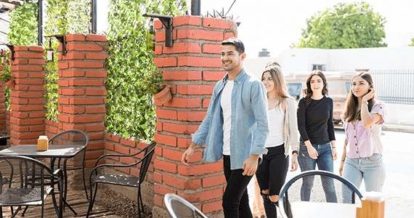So it’s a busy night at your bar and the drinks are flowing. Your bartenders are pouring shots at a rate that’s making you proud – because you know fast pouring = more cash.
But here’s something you may not feel so great about: if just one bartender overpours by one quarter of an ounce for each shot, you could be losing about $100,000 per year.
Yes. You read that number right.
Enter: the pour test. Some bars take overpouring so seriously that they’ll give their bartenders a pour test before the beginning of every shift. And while liquor control systems are an option for some places, pour tests are common practice for bars who may not be able to afford installation of one.
How Much Are You Losing Every Year?
Let’s start with the math: nothing gives you more incentive to do a pour test than to see how much you’re losing every year. Again, if your bartenders are overpouring by just one quarter of an ounce, here’s how you can calculate how much profit you’re losing (Note: these numbers are theoretical).
1oz. drink = $5.00 = $1.25/quarter oz.
1 bartender pours 40 drinks/hour
Total hours of service = 7 hours
So let’s apply the math to a slow night versus a busy night if a bartender poured an extra quarter ounce in each drink.
Slow Night
$1.25 x 20 drinks/hour x 7 hours = $175 profit loss per bartender
Busy Night
$1.25 x 40 drinks/hour x 7 hours = $350 profit loss per bartender
So that means you’re losing, on average, $262.50 per shift for every bartender. Let’s take this further.
$262.50 x 7 days = $1,837.50 profit loss per week
That’s $95,550 profit loss in one year, for one bartender.
If the math is leaving a sour taste in your mouth … good! It’s time to train your bartenders to perfect their free pouring skills. So here’s how to give the test.
How to Give a Pour Test
1. Get an exact pour tube. It looks like this.

Drop the tube into a martini shaker so the bartender can’t see the measurements. You want them flying blind!
2. Start with the right hand. Instruct your bartender to pour 12 one and one quarter ounce pours. Pull out the tube between each pour and see if the pour is accurate.
3. If the measurements are over or under by more than five percent, make the bartender pour again. (A pro will be able to pour the shot within about three percent accuracy!)
4. Repeat the test with the left hand.
5. Make the test harder: ask your bartender to pour 1 ½ oz, 3 oz, 6 oz, ¾ oz, etc.
6. Assess your staff. You may want to reward your rock stars … and spend some quality teaching time with those who didn’t pass.
7. Feel great that your bar staff are now free pour ninjas.
One of the most common reasons restaurants fail is because of mismanaged costs. Given the high markup on liquor sales, minimizing bar spill and waste is a great way to give yourself the cost management boost your restaurant is looking for.
Download your free employee handbook template
Sign up for our free weekly TouchBistro Newsletter







